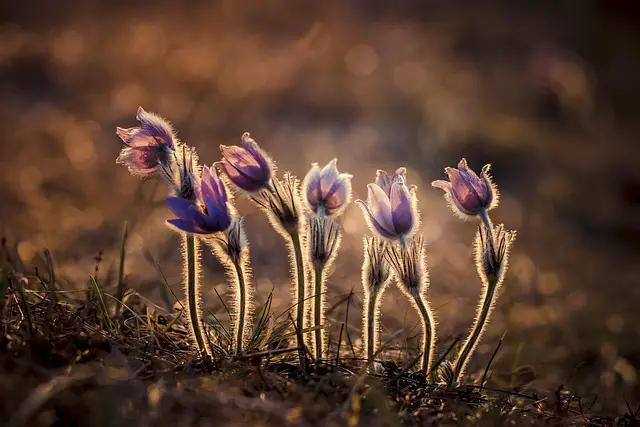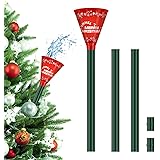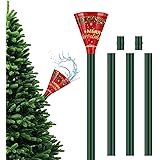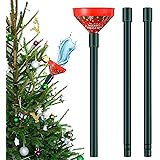If you’re considering planting wildflowers in your garden, you should be aware of the pros and cons of planting wildflowers. Knowing the advantages and disadvantages of planting wildflowers can help you make an informed decision about whether they’re right for your garden.
In this blog post, You will know the pros and cons of it, also what you need to consider when making your choice.
They’re beautiful
Wildflowers are undeniably beautiful and can really liven up any outdoor space, adding a vibrant splash of color to gardens, patios, and more.
Not only do they look great, but wildflowers are also low-maintenance and require minimal care to keep them looking their best.
For those who want to inject a bit of nature into their home without too much work, planting wildflowers is an easy solution.
They can help the environment
Wildflowers have been making headlines lately for their positive impact on the environment. From providing food for pollinators to acting as a buffer against soil erosion, there are numerous benefits that come with planting wildflowers.
But before you start digging up your garden to make room for a vibrant array of colorful blooms, it’s important to understand both the pros and cons of doing so.
The primary benefit of planting wildflowers is the positive impact they have on the environment.
Wildflowers help provide food and habitat for native pollinators like bees, butterflies, and hummingbirds.
They can also act as a buffer against soil erosion, preventing valuable topsoil from washing away. Additionally, they can provide much-needed shelter for small animals and birds, who rely on such habitats for protection from predators.
They don’t require much maintenance
Wildflowers are an attractive addition to any landscape and don’t require much maintenance. For gardeners who have limited time or resources, wildflowers can be a great way to add color and interest to their yard.
Wildflowers are low-maintenance plants that are easy to care for. They don’t need regular fertilizing or pruning, and they’ll generally bloom without a lot of fuss. You also don’t need to worry about watering them as much as other plants, they prefer drier soil.
Wildflowers also tend to be hardy and can tolerate a range of conditions. They thrive in sunny areas, but they can also do well in partially shaded spots.
Plus, they’re usually resistant to pests and diseases.
Overall, wildflowers don’t require much effort to maintain and can be a great addition to any garden or yard. The only caveat is that you may need to do some weeding around them, as they can take over an area if not tended to. However, with regular attention, you can keep them in check and enjoy the beauty of these wildflowers for years to come.
They can attract bees and other pollinators
When it comes to planting wildflowers, there are some definite pros and cons to consider before taking the plunge.
On the one hand, wildflowers can provide a splash of color and beauty to an otherwise dull landscape.
On the other hand, they can be unpredictable in terms of growth, and their maintenance may be more than you bargained for.
To help you decide if wildflowers are the right fit for your garden, let’s take a look at some pros and cons.
One of the biggest advantages of planting wildflowers is that they can attract bees and other pollinators.
These insects are critical for the health of our environment, as they help to pollinate flowers and crops.
Planting wildflowers provide a safe haven for these creatures and help to promote healthy ecosystems.
Additionally, wildflowers can provide beneficial habitats for birds, reptiles, amphibians, and other small wildlife.
They can spread invasive species
If you’re considering planting wildflowers, there are a few things to consider first. One potential downside is that wildflowers can spread invasive species.
This can happen when the plant spreads its seeds beyond the intended area, and those seeds take root in a new, undesired location.
Invasive plants are those that outcompete native plants for resources like water, sunlight, and soil nutrients. This can lead to a decrease in biodiversity as the native species are pushed out, which can harm the delicate balance of an ecosystem.
The best way to avoid spreading invasive species is to research before planting wildflowers. Make sure that the species you are planning to plant are not considered to be invasive species in your area.
Additionally, limit the number of plants that you plant and make sure to keep them contained within their designated area.
By understanding the risks associated with planting wildflowers, you can make sure that they stay in their intended area and don’t become a source of harm to local ecosystems.
They can be difficult to control
Wildflowers can be challenging to control because they can easily spread outside the designated area. As they are self-seeding, you may find that the seeds have spread throughout your garden and even into nearby areas. You will have to actively control the spread of the wildflowers by hand-weeding or by using a physical barrier.
Additionally, wildflowers may not thrive in all climates. If you live in an area with cold winters, you may find that the wildflowers die off each year and have to be replanted. You may also need to provide extra water during dry spells or extreme temperatures if you want them to survive.
Finally, wildflowers can be hard to combine with other plants. If you’re trying to create a formal garden look, the wildflowers may not cooperate, as they tend to grow in large patches that are difficult to divide.
If you’re looking for a more structured look, you may want to consider other options.
Frequently asked questions (FAQs)
What are the benefits of planting wildflowers?
Wildflowers provide a range of benefits. They’re relatively easy to plant and maintain, require little water and fertilizer, attract beneficial pollinators like butterflies and bees, and provide beautiful, seasonal blooms.
What kind of maintenance do wildflowers require?
Most wildflowers require minimal maintenance, but it’s important to keep weeds under control to prevent them from competing with your wildflowers for nutrients and sunlight. To prevent weeds, use mulch around the base of each plant to reduce water evaporation and keep weeds from growing.
Can I grow wildflowers in my area?
It’s essential to research native plants for your area before planting any kind of flower in your garden. Native plants will be more suited to your local climate and soil conditions than non-native varieties, making them easier to grow and maintain.
Are there any negatives to planting wildflowers?
While wildflowers are generally low-maintenance and can provide color and texture to your garden, they can also spread quickly if left unchecked. Make sure you monitor them carefully and remove any unwanted plants that may begin to spread beyond the boundaries of your yard.
Wrapping up
The pros and cons of planting wildflowers are important to consider before taking any action. On the one hand, they are a beautiful addition to any landscape and can provide a great deal of color and variety. On the other hand, wildflowers can spread easily and may require more maintenance than other flowering plants.
Ultimately, whether planting wildflowers is right for your yard is up to you. Consider the advantages and disadvantages and weigh them against your personal preference, budget, and the amount of space available. No matter what you decide, wildflowers are sure to bring beauty and joy to your garden!
Auto Amazon Links: No products found.
Perfect Plants Christmas Tree Saver 8oz. | Easy Use Xmas Tree Preserver Food | Have Healthy Green Christmas Trees All Holiday Season
$9.97 (as of December 3, 2025 00:36 GMT +00:00 - More info- Product prices and availability are accurate as of the date/time indicated and are subject to change. Any price and availability information displayed on [relevant Amazon Site(s), as applicable] at the time of purchase will apply to the purchase of this product.
Kaiedos Christmas Tree Watering Funnel - 39 Inch Funnel, Reusable Design, Makes Watering Your Live Tree a Snap!
$14.99 (as of December 3, 2025 00:36 GMT +00:00 - More info- Product prices and availability are accurate as of the date/time indicated and are subject to change. Any price and availability information displayed on [relevant Amazon Site(s), as applicable] at the time of purchase will apply to the purchase of this product.
Christmas Tree Watering Funnel, Real Christmas Tree Water Long Funnel About 40 Inch, Trees Watering System for Water Indoor Outdoor
$15.99 (as of December 3, 2025 00:36 GMT +00:00 - More info- Product prices and availability are accurate as of the date/time indicated and are subject to change. Any price and availability information displayed on [relevant Amazon Site(s), as applicable] at the time of purchase will apply to the purchase of this product.
IPOOLTENG Christmas Tree Watering Funnel 3 Tube 1 Funnels 40 Inch - 3 Section Plastic Christmas Tree Funnel Waterer, Long Funnels for Watering Trees, Best Gifts for Your Parents to Water Tree
$15.53 (as of December 3, 2025 00:36 GMT +00:00 - More info- Product prices and availability are accurate as of the date/time indicated and are subject to change. Any price and availability information displayed on [relevant Amazon Site(s), as applicable] at the time of purchase will apply to the purchase of this product.
1 Pack Christmas Tree Watering Funnel System, 44 Inch Christmas Tree Watering Stick with Adjustable 3-Section Design, Reusable & Spill-Free, Xmas Plant Waterer Tool for Indoor and Outdoor
$16.99 (as of December 3, 2025 00:36 GMT +00:00 - More info- Product prices and availability are accurate as of the date/time indicated and are subject to change. Any price and availability information displayed on [relevant Amazon Site(s), as applicable] at the time of purchase will apply to the purchase of this product.
Cuisinart 6.5" Cast Iron Smashed Burger Press, Round Flat Edge Grill Press for Crispy Smash Burgers, Burger Tool for Grill and Griddle Accessories, for BBQs and Tailgates
$24.99 (as of December 4, 2025 16:51 GMT +00:00 - More info- Product prices and availability are accurate as of the date/time indicated and are subject to change. Any price and availability information displayed on [relevant Amazon Site(s), as applicable] at the time of purchase will apply to the purchase of this product.
Snow Joe Premium Enviro Blend Ice Melt, Green-Coated Deicer Crystals, 50 lb - Safer Melter for Vegetation, Concrete & Metals w/ Anti-Corrosion Calcium Magnesium Acetate
$32.97 (as of December 4, 2025 16:51 GMT +00:00 - More info- Product prices and availability are accurate as of the date/time indicated and are subject to change. Any price and availability information displayed on [relevant Amazon Site(s), as applicable] at the time of purchase will apply to the purchase of this product.
Muddy Mat® Shown on TV Super Absorbent Microfiber Dog Door Mat for Muddy Paws, Non-Slip Washable Pet Rug, Quick Dry Chenille Entryway Carpet, Machine Washable Indoor Outdoor mat, Grey 30"x19"
$19.95 (as of December 4, 2025 16:51 GMT +00:00 - More info- Product prices and availability are accurate as of the date/time indicated and are subject to change. Any price and availability information displayed on [relevant Amazon Site(s), as applicable] at the time of purchase will apply to the purchase of this product.
OLANLY Dog Door Mat for Muddy Paws 30x20, Absorbs Moisture and Dirt, Absorbent Non-Slip Washable Doormat, Quick Dry Chenille Mud Mat for Dogs, Entry Indoor Entryway Carpet for Inside Floor, Grey
$9.99 (as of December 4, 2025 16:51 GMT +00:00 - More info- Product prices and availability are accurate as of the date/time indicated and are subject to change. Any price and availability information displayed on [relevant Amazon Site(s), as applicable] at the time of purchase will apply to the purchase of this product.
Zevo Flying Insect Trap Official Refill Cartridges - Fits Both Zevo Trap & MAX Indoor Fly Trap - Authentic Trap+Lock Technology to Catch Gnats, House & Fruit Flys (4 Official Refill Cartridges)
$14.97 (as of December 4, 2025 16:51 GMT +00:00 - More info- Product prices and availability are accurate as of the date/time indicated and are subject to change. Any price and availability information displayed on [relevant Amazon Site(s), as applicable] at the time of purchase will apply to the purchase of this product.











